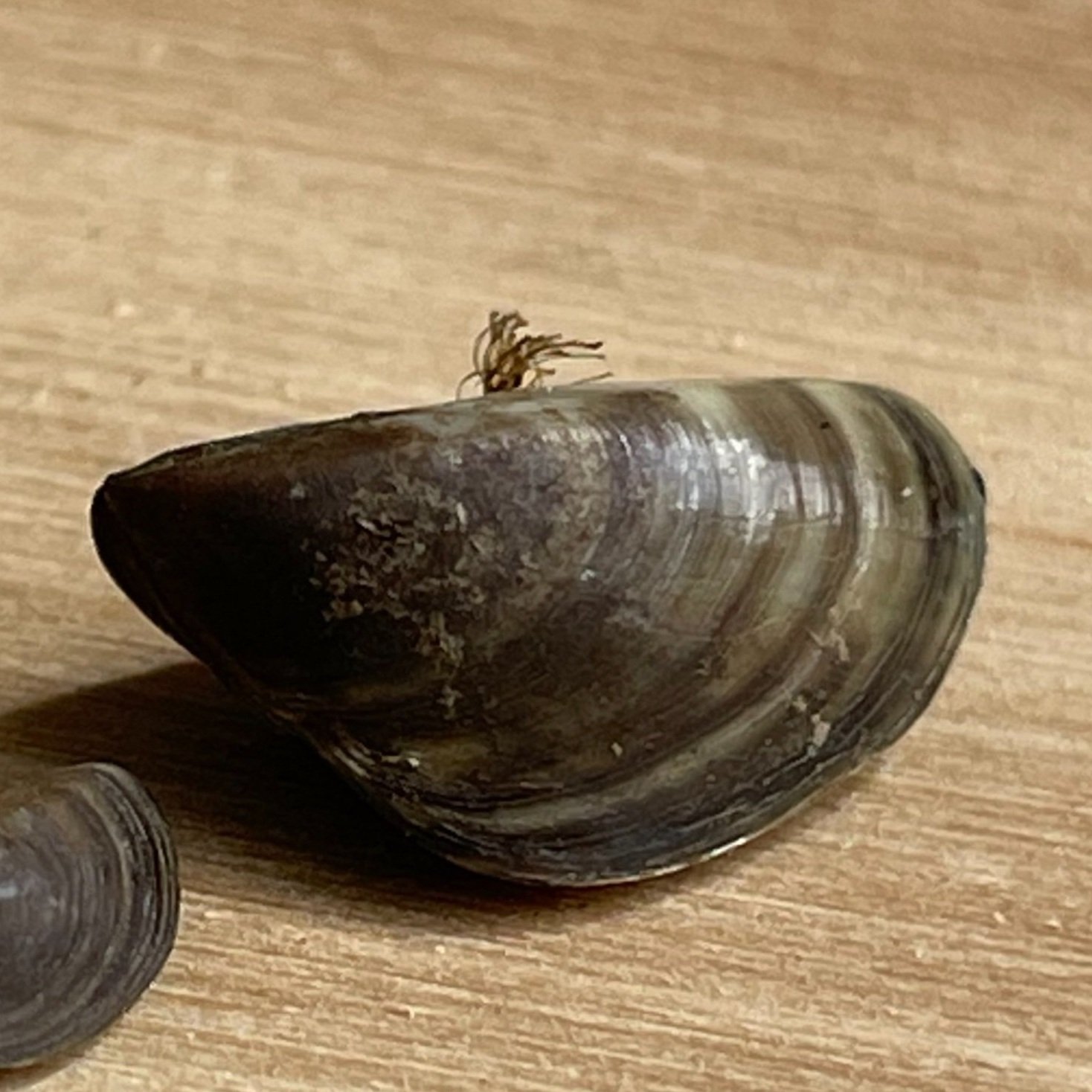Quagga Mussels
Quagga Mussel: Image Courtesy of Amy Benson, U.S. Geological Survey, Bugwood.org
There are over 35 listed aquatic invasive species (AIS) in Idaho. While all AIS pose risk to Idaho’s waterways, quagga and zebra mussels have emerged as one of the most aggressive invasive species spreading across the United States. Quagga mussels (Dreissena bugensis) and zebra mussels (Dreissena polymorpha) are small, freshwater bi-valve mollusks that posses the ability to reproduce rapidly and spread exponentially. They are the only freshwater mussel in the U.S. that attaches to hard surfaces, and this is precisely why these species poses such a great threat. The mussels survive out of the water for several days, and if attached to any kind of a mobile structure (watercraft) can easily hitchhike from one waterbody to the next. Established infestations lead to severe economic and environmental damage as pipes clog, infrastructure is encrusted, and our native species are outcompeted for the resources they need.
Quagga Mussel Veliger identified in the Mid Snake River.
September 2023, ISDA confirmed the detection of quagga mussel veligers in the Mid Snake River. Veligers are the larval form of invasive mussels that are planktonic (unable to be seen by the naked eye). Veligers are free-floating and depend on water currents to carry them down a water system. Veligers will exist in this planktonic form within the water column for about a month until they reach a specific size and will then settle and attach to a suitable substrate.
Invasive Mussel Lifecycle: Graphic adapted from material created by the Flathead Biological Station.
quagga characteristics
Small freshwater bivalve with a D-shaped shell (roughly the size of a thumbnail).
Asymmetrical shell haves.
Hair-like byssal threads protruding from the shell allowing them to attach to surfaces (unique to this species).
Varying stripes that are brownish-yellow to black in color.
Filter-feeders that can process up to a liter of water per day.
Survive out of water for up to 30 days.
what quagga mussels will do
Disrupt water delivery and drainage which will impact municipalities and agriculture.
Impact power generation by increasing upkeep and repair costs.
Damage fisheries and aquatic habitat by consuming the resources that our native species need.
Alter water chemistry which can lead to degraded water quality and algae blooms.
Negatively impact recreation and tourism.
Reduce property values.
Impair fish bypass screens reducing survival of migrating juvenile steelhead and salmon.
Increase cost of hatchery fish production and stocking.
What can i do to stop the spread of quagga mussels?
Before leaving any waterbody, always inspect equipment (boats, planes, trailers, decoys, anchors, scuba gear, etc.) for visible plants and animals. Remove this material on site where there is no danger of it washing into a waterbody.
Remove standing water from compartments, bilge, ballasts, etc.
Clean and dry anything that came in contact with water (boats, decoys, trailers, equipment, clothing, dogs, etc.).
Stop at ISDA watercraft inspection stations.
Quagga mussel infested irrigation pipe after being in mussel infested water for 16 months.
+ Photo Credits
Quaga Mussel: Amy Benson, U.S. Geological Survey, Bugwood.org Quagga Veliger: ISDA Quagga Characteristics: Variable Coloring and Byssal Threads: ISDA / Syphoning: Mike Quigley, NOAA, Bugwood.org. Quagga Impacts: Fouled Gimbal: ISDA / Fouled Boat Prop: National Park Service, Lake Mead, Arizona / Clogged Pipe: Defense Visual Information Distribution Service https://www.dvidshub.net/about/copyright / Invasive Mussel Beach: US Environmental Protection Agency / Great Lakes National Program Office, USEPA, Bugwood.org.

















